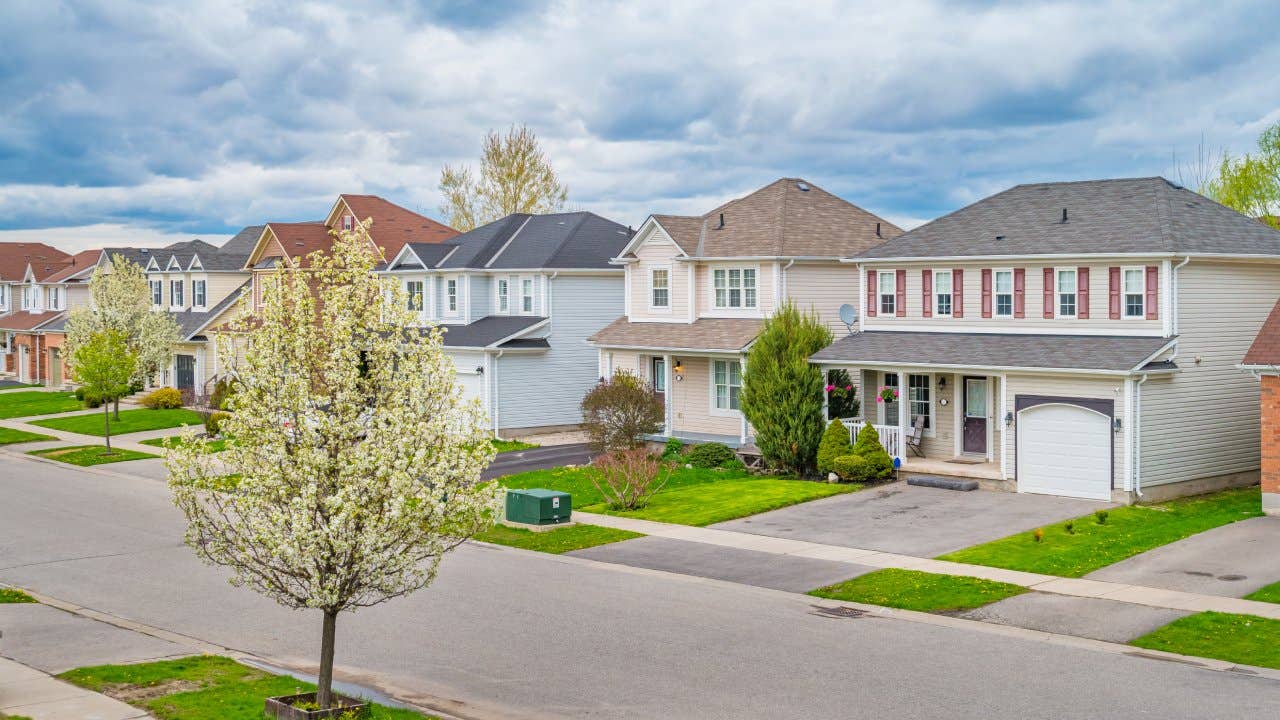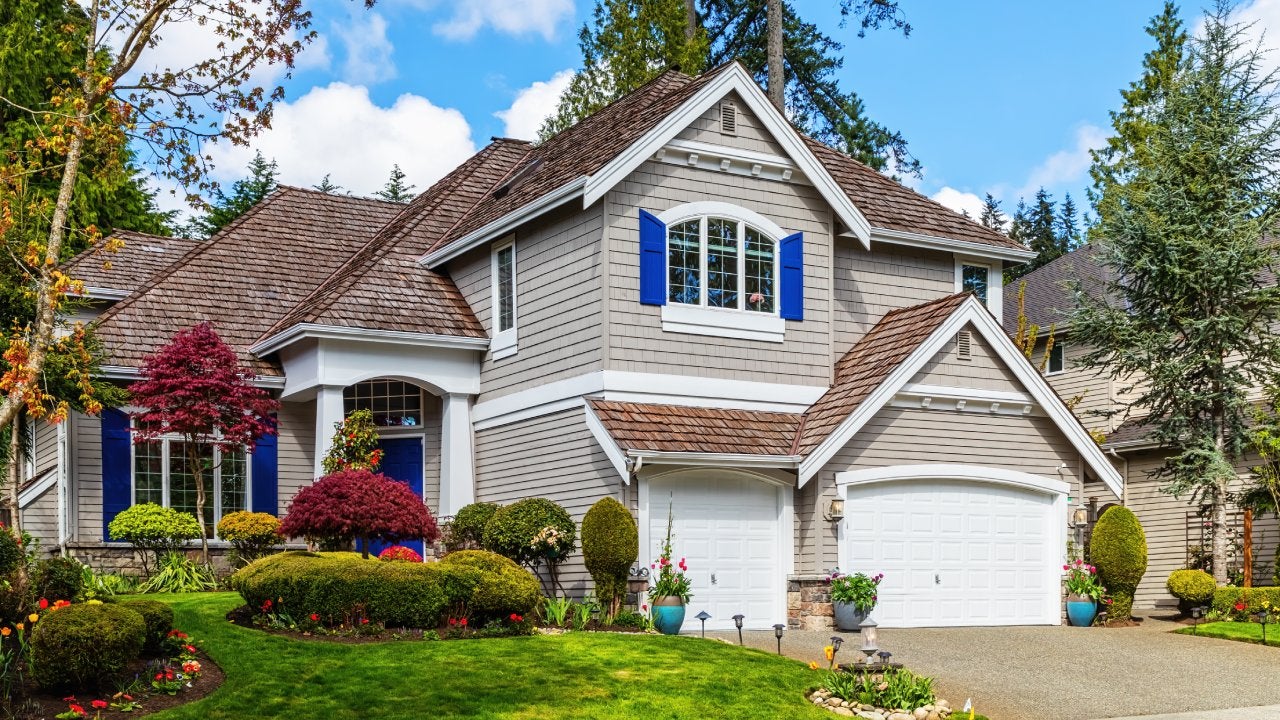Should you get an adjustable-rate mortgage?

Key takeaways
- Adjustable-rate mortgages (ARMs) have gained popularity as interest rates have risen.
- ARMs generally have slightly lower rates than fixed-rate mortgages.
- If you expect rates to fall, or plan to move before the initial fixed-rate period expires, getting an ARM can make sense.
With mortgage rates holding steady at high levels and home prices doing the same, adjustable-rate mortgages, or ARMs, have gained popularity in recent years. This type of mortgage can be a more affordable means to get into a home, especially as higher rates on fixed mortgages price some borrowers out.
You might be wondering, then: Should I get an adjustable-rate mortgage? Here’s some guidance to help you determine if this type of mortgage is right for you.
Why some borrowers are considering ARMs right now
Adjustable-rate mortgages usually come with lower fixed interest rates for an initial period, after which the rate moves up or down at regular intervals for the remainder of the loan’s term. The rate movement is tied to an index dictated by your lender, like the U.S. prime rate.
Throughout 2024, mortgage rates stayed essentially flat, and more of the same is expected in 2025. With less purchasing power at higher fixed rates, the lower introductory rates attached to ARMs make them appealing options for homebuyers. Considering rates remain elevated — and will likely stay that way for a while — an ARM may be worth exploring if you can’t find an affordable fixed-rate loan.
“Given still-high home prices and this rising rate environment, potential homebuyers are finding ways to reduce their monthly payments and view ARMs as more attractive given the widening spread between rates for ARM and fixed-rate loans,” says Joel Kan, vice president and deputy chief economist at Mortgage Bankers Association (MBA).
That said, interest in ARMs has declined somewhat. ARMs made up 4.7 percent of all mortgage application activity, as of the MBA Weekly Mortgage Applications Survey from January 8, 2025. That’s down from recent highs set in the fall of 2022 when ARMs made up more than 9 percent of application activity, thanks to a rise in fixed mortgage rates.
Is an ARM loan a good idea right now?
An ARM is essentially a bet on the future of mortgage rates. If you think mortgage rates will be lower in a few years, an ARM can let you cash in by allowing your rate to move lower once the fixed-rate period ends. That said, many housing economists don’t expect mortgage rates to move notably this year.
In a December 2024 statement, Lawrence Yun, chief economist at the National Association of Realtors, predicted that “mortgage rates will modestly trend lower.” He added, “Given that mortgage rates have stayed above 6 percent for more than two years, consumers are getting used to the new normal, especially considering that the 50-year average is 7.7 percent.”
In terms of deciding whether or not an ARM is a good idea, it’s all about where you think rates will be when your fixed-rate period ends — typically in three, five or seven years. However, predicting rates that far into the future is quite difficult. If you’re not willing to take on this uncertainty, consider sticking with a fixed-rate mortgage.
Who is an adjustable-rate mortgage best for?
A lower monthly mortgage payment sounds like a no-brainer, but ARMs are risky, and they’re not a fit for every borrower. As you weigh the pros and cons, here are some situations when an ARM is a good idea:
- You’re not buying your forever home. ARMs typically have fixed-rate introductory periods of three, five, seven or 10 years, so they “can make sense for a borrower with plans for a shorter time frame in their new home of five to 10 years, where they would likely sell before their rate resets,” says Kan.
- You’re comfortable with the risk. If you’re set on buying a home now with a lower payment to start, you might simply be willing to accept the risk that your rate and payments could rise down the line, whether or not you plan to move. “A borrower might perceive that the monthly savings between the ARM and fixed-rates is worth the risk of a future increase in rate,” says Pete Boomer, head of mortgage at Regions Bank.
- You’re borrowing a jumbo loan. Borrowers taking out bigger loans tend to go for ARMs. As of May 2024, 40 percent of originations above $1 million were ARMs, according to CoreLogic.
- You’re able to make extra payments in the introductory period. If you have room in your budget to pay extra toward the loan principal during the initial rate period, a lower-rate ARM can help you maximize those interest savings. (Bankrate’s additional mortgage payment calculator can help you weigh different scenarios.)
The risks of ARMs
While ARMs have staged a comeback in recent years, don’t let that uptick in popularity fool you into thinking they’re easy to get. You’ll need a higher down payment of at least 5 percent, versus 3 percent for a conventional fixed-rate loan.
There’s also the need to verify that your current financial situation allows for a higher payment down the road — even if you plan to move before the lower-rate period ends.
“Most ARM loans now are underwritten based on the highest payment expected on the loan to ensure the borrower can handle the payment shock from a rate increase,” says Kan. “Many other factors come into play, such as rates over the longer five- to 10-year horizon, the borrowers’ income and employment situation, housing market conditions that impact their ability to refinance or sell (if necessary) when their fixed period expires and more.”
That “if necessary” piece underscores the primary risk with ARMs: It’s impossible to predict the future. What if you’re nearing the end of the introductory period and lose your job? What if your plan to sell the home gets derailed by a market downturn? Nothing in life is certain, so if you need a stable monthly payment — or simply can’t tolerate any level of risk — it’s best to go with a fixed-rate mortgage, despite the expense.
Types of ARMs to consider
If you qualify for an ARM and plan to get one, you’ll have a few options. The 5/1 ARM is the most common type of adjustable-rate mortgage. With this ARM, you’ll have the same interest rate and principal and interest payments for the first five years. After that, the “1” comes into play: Every year, your interest rate will adjust up or down based on the current market.
In addition to 5/1 ARMs, 5/6 ARMs are becoming more popular. With this type of loan, you’ll still get the five-year introductory rate, but the interest rate resets more frequently: every six months. 5/6 ARMs are better for folks who have some flexibility in their budget since the rate resets more frequently.
There are other types of ARMs as well, including:
- 3/1 or 3/6 ARM – You’ll have an introductory rate for three years, followed by annual or six-month rate resets. Since you’re only getting the fixed rate for a short time, that rate might be the lowest ARM rate you find. 3/1 ARMs aren’t as common as other kinds of ARMs, however. These loans are best for people who only plan to be in the house temporarily or have an imminent uptick in income (e.g., are finishing a degree or awaiting a promised promotion).
- 7/1 or 7/6 ARM – You’ll have a fixed rate for seven years, then pay a new rate (either higher or lower) every year or six months. This might be a good option if you want more years of fixed payments and are willing to take on a slightly higher rate than the more popular 5/1 or 5/6 ARM.
- 10/1 or 10/6 ARM – These adjustable-rate loans offer the longest period of stability: a full decade of fixed-rate, predictable payments, followed by annual or six-month adjustments. Since you’re getting 10 years of the same payments, the introductory rate usually isn’t as competitive as rates on shorter ARMs. This type of ARM is best for people who want to get a lower rate than a fixed-rate loan, but want to minimize risk as much as possible.
Most ARMs have caps on how much the rate can increase in one year (or whatever the interval is), along with a lifetime cap that limits the amount it can increase throughout the loan’s term. You can use Bankrate’s adjustable-rate mortgage calculator to estimate whether you’d be able to shoulder the largest possible monthly payment based on your lifetime cap.
Bottom line
Should you get an adjustable-rate mortgage? That totally depends on your financial situation, your risk tolerance and the rate environment. Generally, it’s best if you can see a significant rate savings when compared to a fixed-rate loan — and particularly if you plan to move or refinance before the rate resets.
FAQ
You may also like

Who is most likely to get a home equity loan?





